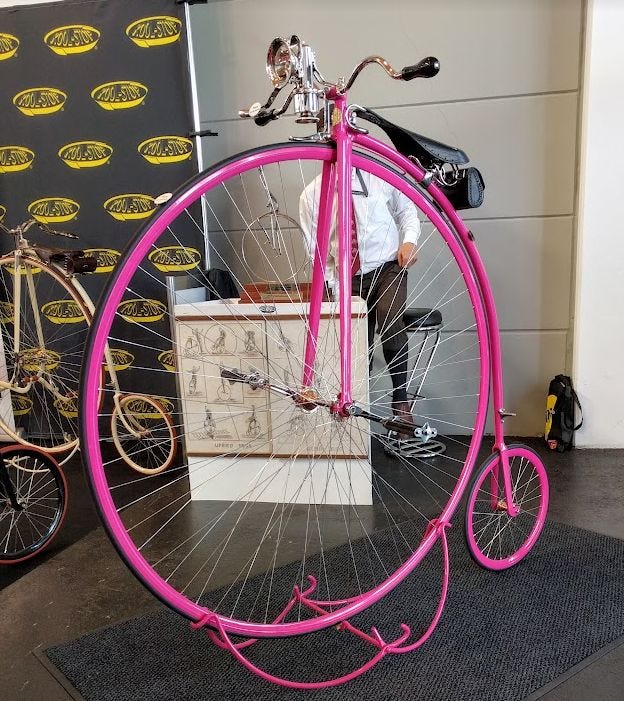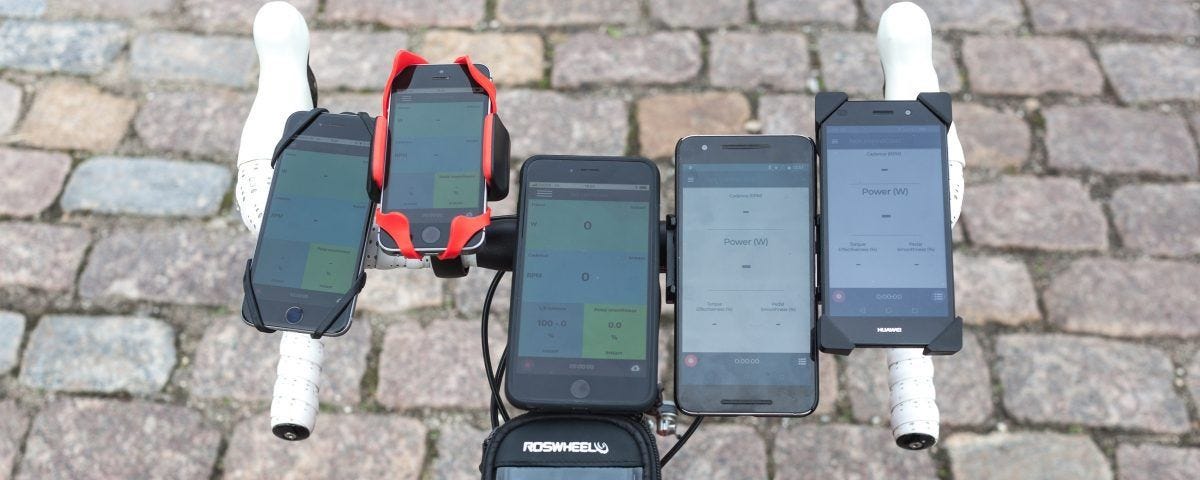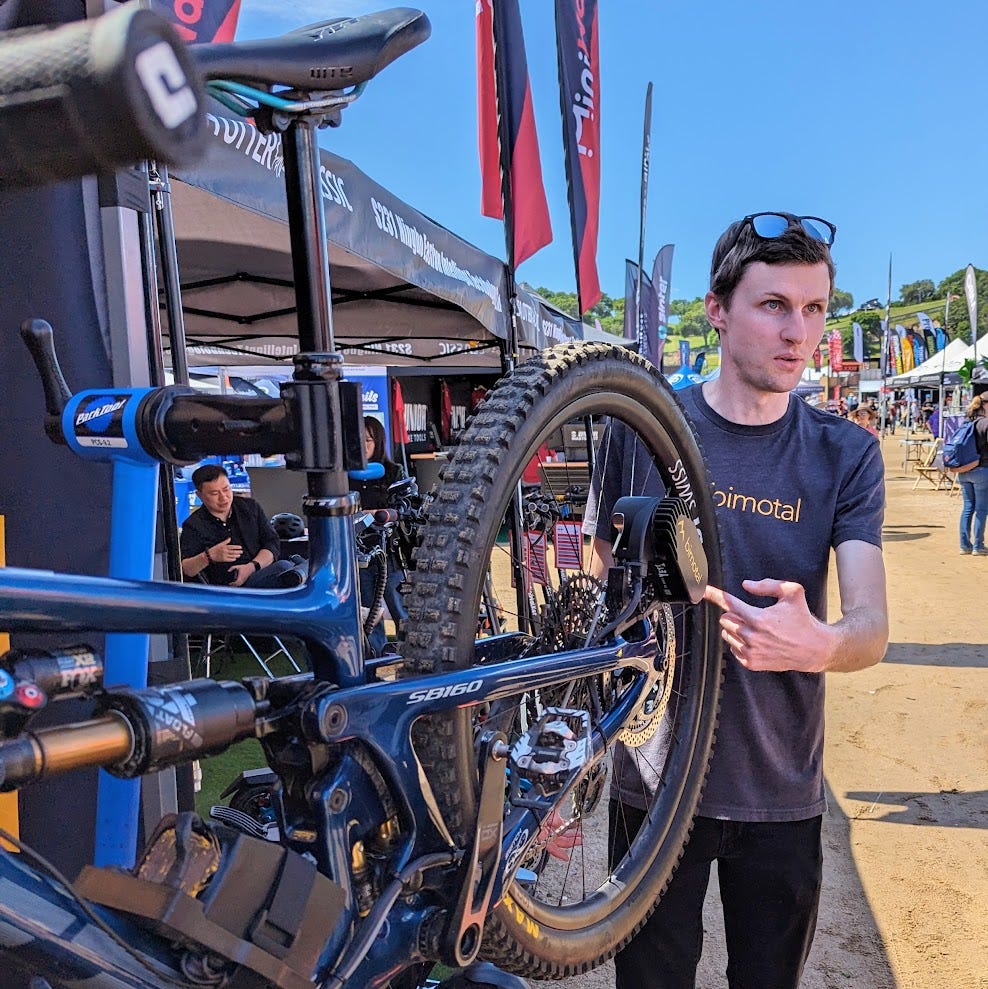The first time I tried an e-bike for real - I crashed. So many people I talked to have had the same experience. If you could take a look into any e-bike sharing platform and look at the stats for first renter crashes I bet you would see this as well. They would never tell you unless you share a few too many beers with the right guy (if you know what I mean).
My (small) crash led me to start thinking about why. Why did it happen? The answer is responsiveness. Or rather lack thereof. Response to start/stop pedaling needs to be instant. Some of this is in the (EU) law - but waaaay too lax. Not at all in the way it should be. In my mind we need to have two requirements to make sure e-bikes are safe for virgin riders:
The maximum crank angle change (within a specified time interval) before the motor should start providing assistance. We call that spec “angle to start”.
The maximum time of zero crank movement till the motor stops providing assistance. This spec is what we call “delay to stop”.
Our brains are smart enough that we can get used to most things - even the really odd ebikes on the market today. That does not make it safe or natural. As an ebike user, you will not even pay attention to this after a few weeks. That does not mean it is irrelevant.
Brain delay
You want the motor assistance to start as soon as you begin pedaling. And you want the motor to stop as soon as you stop pedaling. To give the rider a feeling of being in full control.
It is shown in tests that less than a 100ms delay is fast enough for the human brain to think things are happening simultaneously. Shorter is better. More will likely increase the risk of first-ride crashes.
Angle-to-start
For angle-to-start we can do a quick calculation to see what that means in a practical example. To do this, remember a bike has at least two gears we need to consider. The gearing between the chainring and the rear cog - plus the ratio between the size of the rear cog and the rear wheel. So even though single-speed is not ideal for a bike, with motor support it can actually feel quite okay on an urban bike (see the Cowboy bikes for a prime example).
If we simply look at a high’ish gearing with a big’ish wheel and say we allow the bike to move about 20mm before the motor kicks in, the calculation comes out like this:
In other words - an angle-to-start specification of max 1 degree is not unreasonable. Position sensors for rotational position can easily have 360-step resolution and would be sufficient in this case.
What do you think? Would that be a reasonable requirement for an ebike? I think this should be the law :)
And yes - of course the sensor tech we have developed over in Sensitivus Gauge (which is now part of the patent base and knowhow in the recently relaunched Sensitivus) can do more than that. Because we did this exact calculation before developing this :)
COMING TO EUROBIKE?
We are getting ready to go to Eurobike 2024 in Frankfurt July 3-5. With all the weird and wonderful bikes and whatnot. Looking forward to that.
Sensitivus will be there to help e-bike drive manufacturers get our much better torque and rpm sensor technology into their drives - simply to make e-bikes feel much nicer/more natural/more responsive (and thus safer for all).
Who should I meet with there? My calendar is filling up, but there is still room for some more meetings on Thursday and Friday as I roam around the halls to meet folks :)
WANT A PATENT?
You can not patent a business model - but you can patent the key thing that makes it possible. When we came up with a subscription-based bike power meter, we patented the idea that the bike computer would show (as an example) 777 Watts when (as an example) your subscription was not paid for.
If you could use this patent for anything - I will sell it to you. Just let me know :)
Patent: US10313445B2 - if you are interested.
The way the bike business works could make this a really good idea - let me explain. Let us say that a power meter can be manufactured for €10 (materials and labor) and the manufacturer needs a margin of €90 to cover development, sales, and support on top. Not far off.
If that goes through the traditional channels of distributors and retail stores you end up about 4x that price or around €400 for the end user to pay.
Now with the subscription model, only the actual manufacturing cost needs to go through the channel and may thus end up around €40. The subscription is paid directly from the end-user (customer) to the manufacturer. Assuming the same €90 this means the end-user ends up with a total of €130.
Quite a lot better for the end-user :) And that was the whole motivation for this idea.
CRANKY STUFF
Hub drive ebikes with a hidden 2-speed front-shifter may be the best solution for urban bikes. I have looked at this before - today my inbox received this one:
Maybe that is the solution? Time will tell. There have been a number of these and the idea works. Likely enough to get the extra torque you need for starting uphill with a hub motor ebike.
They should be at Eurbike, so check it out: https://www.contavelo.com/
PRIZE WINNER
Next-level e-bike control
Taking ebike control algorithms to the next level - this is something we need to see more of. Most ebikes today are pretty boring: assist level 1-2-3-4-5.
How about: "flatten the hills", "5m/s tailwind", and other more advanced settings?
Piotr here proved it can be done. And then went on to receive one of 3 prizes for his outstanding thesis project at the Danish Technical University - a project done while he was at Sensitivus.
In his thesis, Piotr developed a control algorithm for ebikes using Model Reference Adaptive Control (MRAC) to address dynamic changes in the opposing forces (what the rest of us call “headwind” and “going uphill”).
Big congrats.
FRIENDS
Bimotal
One of the wonderful things you will not see at Eurobike this year is the Bimotal E-MTB conversion kit. Unfortunately. These guys - that I have gotten to know well - have designed quite an ingenious motor that you can click on and off to convert your MTB forth and back between electric and acoustic.
I say MTB because you need the rear brake caliper on the seat stay, not the chain stay. This is far more common on full-suspension MTBs.
Their real superpower is how quickly they move on the development side - and - how small and compact a motor they have developed. They have motors for other purposes also.
ABOUT
I have spent the last 10 years on sensors and technology for bikes. Both are things that I really enjoy. Technology for bikes can be many things - these are the types of products and technologies I can talk about from experience:
Power meters (to measure how hard you pedal for training purposes - but actually valuable for much more than just that). A product with a high retail price and a low BOM price. Mostly sold as after-market.
Case: Technology still on the market by THM - The Clavicula PM crankset.Brake sensors (for optimizing MTB downhill performance). Very niche product for elite riders, which may eventually slowly become more widely accepted. Pure after-market.
Case: Technology on the market from BrakeAce.
e-bike torque/cadence sensors (to make e-bikes feel more like “analog” bikes on a really “good leg day”). Super high volume product with a fairly low sales price - a pure B2B product for integration into a motor design or similar.
Case: Technology on the market from Sensitivus, but not quite out in stores yet.
Each of these examples has occupied a good chunk of my life over the last 10 years, but there is more. A lot more. This is a story for another day.
P.S.
If you found this interesting there is more in the back issues. And if you found it boring, maybe the previous issues were more interesting for you:
Why you should go to Sea Otter - and why you need a brake sensor if you really want to go fast downhill
Why you should do a Kickstarter - or actually, why you should maybe not
Why you need a power meter - open source or not
Why hub motors are better - and how Miri may be just the writer/photographer you are looking for
Why you should ride a bike to work - maybe even an electric unicycle
Why you should buy a new bike now - and why you should know TwoTone :)
P.P.S.
As you know my other “life” is in high-speed electronics. I do training for professionals in this super nerdy field of “signal integrity” both online and live around the world over at EE-Training. My latest project has been to add a video course - so anyone at that level in electronics can do my main course 100% self-paced.
If you know someone in electronics at a higher level - send them this link:
https://eet.learnworlds.com/course/si
And if you want to convince yourself that you are too smart for this course, here is a quick for-fun multiple-choice quiz to test yourself on the first 6% of the material:
https://forms.gle/j2RGMNfhQfm79yG99
Ace the test - like Trump aces a dementia test (his own words) - and you know you can skip part of the first video. That is something, right?
Thanks for reading along :)
[[ … AND LET’S KEEP UNF*KING THE PLANET - ONE EBIKE AT A TIME ]]









